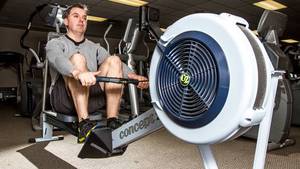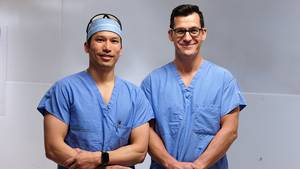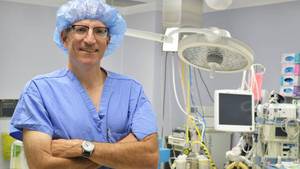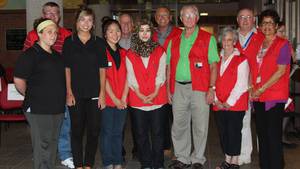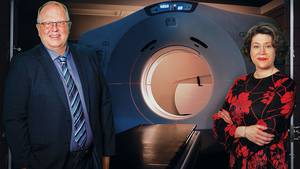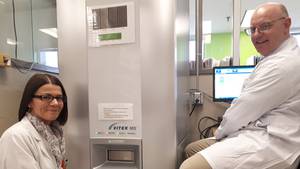Today’s world — for business, health, entertainment and virtually everything else we do — is constantly evolving with increasingly more remarkable, and efficient, technology.
To be successful you must be able to keep up with this evolution. One doctor and his team at the QEII Health Sciences Centre are on the verge of not just keeping pace, but becoming innovators in this technological rush.
Orthopaedic Surgeon Dr. Michael Dunbar is spearheading the development on an app to help address one of Nova Scotia’s most frustrating problems — patient wait times to see specialists at the QEII.
The app, called the Gait Monitoring System (GMS), was written about a year ago, building upon the research Dr. Dunbar has accrued over his 15 years as a surgeon at the QEII and professor at Dalhousie University. The tutelage is provided by Dr. Lorne Leahey, a pioneer in portable gait research, formerly of the IWK. When the app is running, the patient places their smart phone on their lower back, goes for a walk and it can measure their walking patterns to tell if something is out of sync.
“So people wait for years, and often what happens, almost the majority of the time, is we’ll tell them that they don’t actually need surgery,” says Dr. Dunbar. “And they’re very, very frustrated, waiting for years to be told they don’t need anything.”
Dr. Dunbar says the only way they can initially identify how serious a patient’s status is, is through asking them how they feel and accompanying that with an X-ray; essentially just a snap shot that isn’t necessarily as in-depth or conclusive enough.
“It’s kind of like trying to figure out someone’s personality from meeting them at a party; it’s just a snap shot and you can’t judge how they are day-to-day,” says Dr. Dunbar.
“Essentially, we have a gait lab that costs millions of dollars; but it takes people and time to run a patient through,” says Dr. Dunbar. “The result is a lot of really neat, detailed data, but with this app, instead of collecting a small amount of precise data, we can instead collect lower-level, less precise, providing a broader perspective of how the patient is moving by looking at their centre mass displacement.”
If validated, the app would allow local hospitals, clinics, physiotherapists, and doctors across the province to hook up the app, see a larger number of patients and be able to identify the smaller percentage that actually need to visit the QEII’s orthopaedic department, cutting down wait times for those with the most pressing injuries.
But the app’s greatest strength isn’t just in identifying those in need; for those not necessarily streamlined to immediately see Dr. Dunbar, they will also be able to receive care. These patients will be plugged into a network run by Kinduct Technologies, a local software platform which is supporting the GMS app.
Dr. Dunbar says that by reading the patient’s data and specific diagnosis, acquired from the GMS app, Kinduct can give advice on recommended exercises, diets, online videos and a help section for frequently asked questions.
“So those not streamlined still get local content from local experts, as opposed to going online and getting information from US centres,” says Dr. Dunbar. “They get real-time information, advice that they need and they’re happier as well.”
The app also could allow Dr. Dunbar to keep track of patients post-surgery, by reading their data acquired from the app, without having to schedule further in-person meetings, meaning patients could receive a complete care cycle, with just a fraction of the travel and wait time.
For all the medicinal benefits the GMS app can bring, Dr. Dunbar is most excited about the potential the technology has to help other medical professions, too.
“Once we develop this core software, any other facility in the country, and other specialists, can utilize this app,” says Dr. Dunbar. “Frailty research, spinal cord repair, diabetes monitoring, activity levels for the obese, cardiac rehab — all these could be monitored through a cell phone and can switch over to this technology overnight.”
With the app expected to get the green light within the next 12-18 months, Dr. Dunbar believes that this would be a big plus for Halifax, helping his team provide better services, better care and contribute to keeping our other facilities running — all through an app on a smart phone.
“Halifax can become the new hotbed of health technology.”

